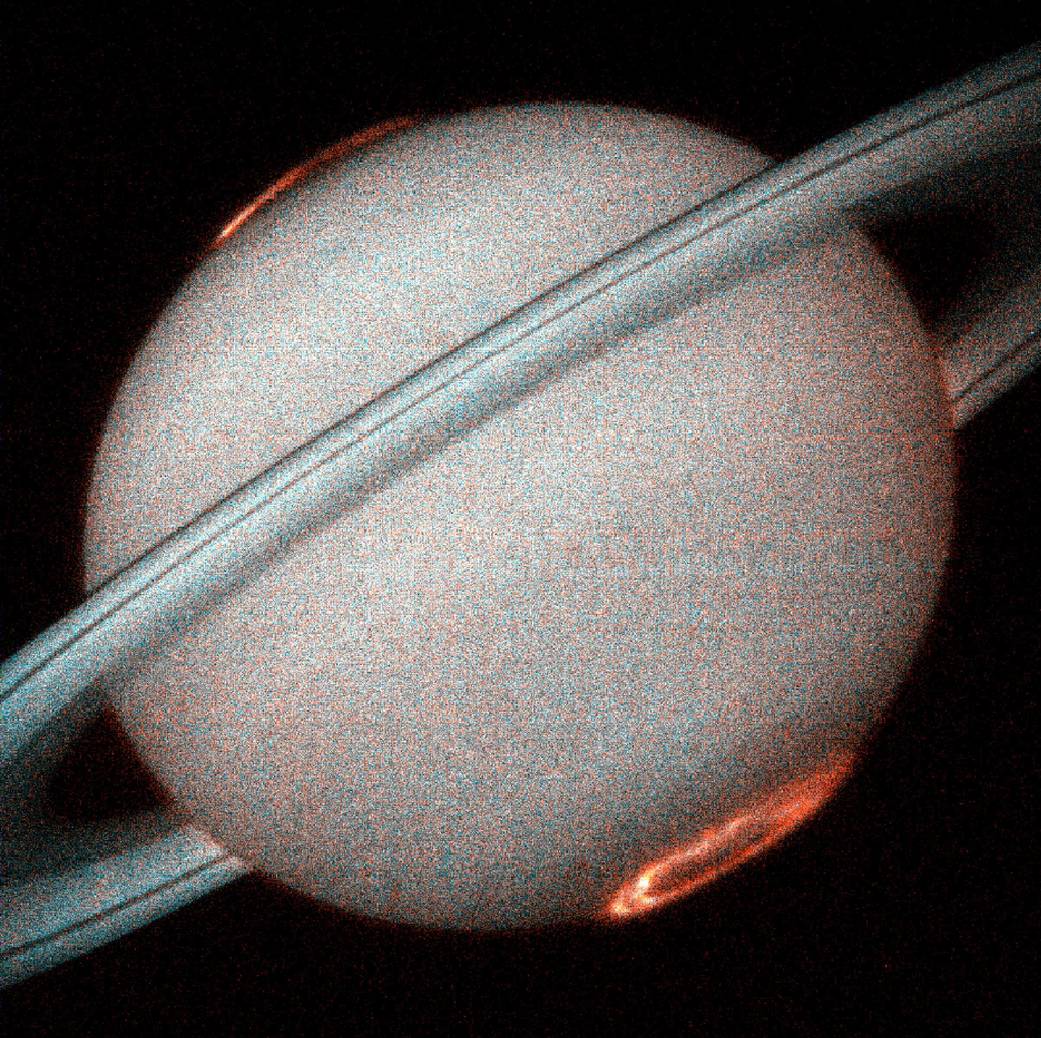
Saturn was 810 million miles (1.3 billion kilometers) away when the Hubble Space Telescope took this ultraviolet image of the planet, revealing a vivid auroral display rising thousands of miles above the cloud tops over both of the planet’s poles.
These spectacular light shows are caused by an energetic solar wind that sweeps over the planet, much like it does on Earth. However, unlike on Earth, Saturn’s auroras can be seen only in ultraviolet light, and therefore are visible only from space using instruments sensitive to ultraviolet radiation. The images reveal ripples and overall patterns that evolve slowly, appearing generally fixed in our view and independent of planet rotation. These variations indicate that the auroras are primarily shaped and powered by a tug-of-war between Saturn’s magnetic field and the flow of charged particles from the sun.
Study of Saturn’s auroras began in 1979 when the Pioneer 11 spacecraft observed a far-ultraviolet brightening on Saturn’s poles. The Saturn flybys of Voyager 1 and 2 in the early 1980s then provided a basic description of the planet’s enormous magnetic field.Image Credit: NASA




























